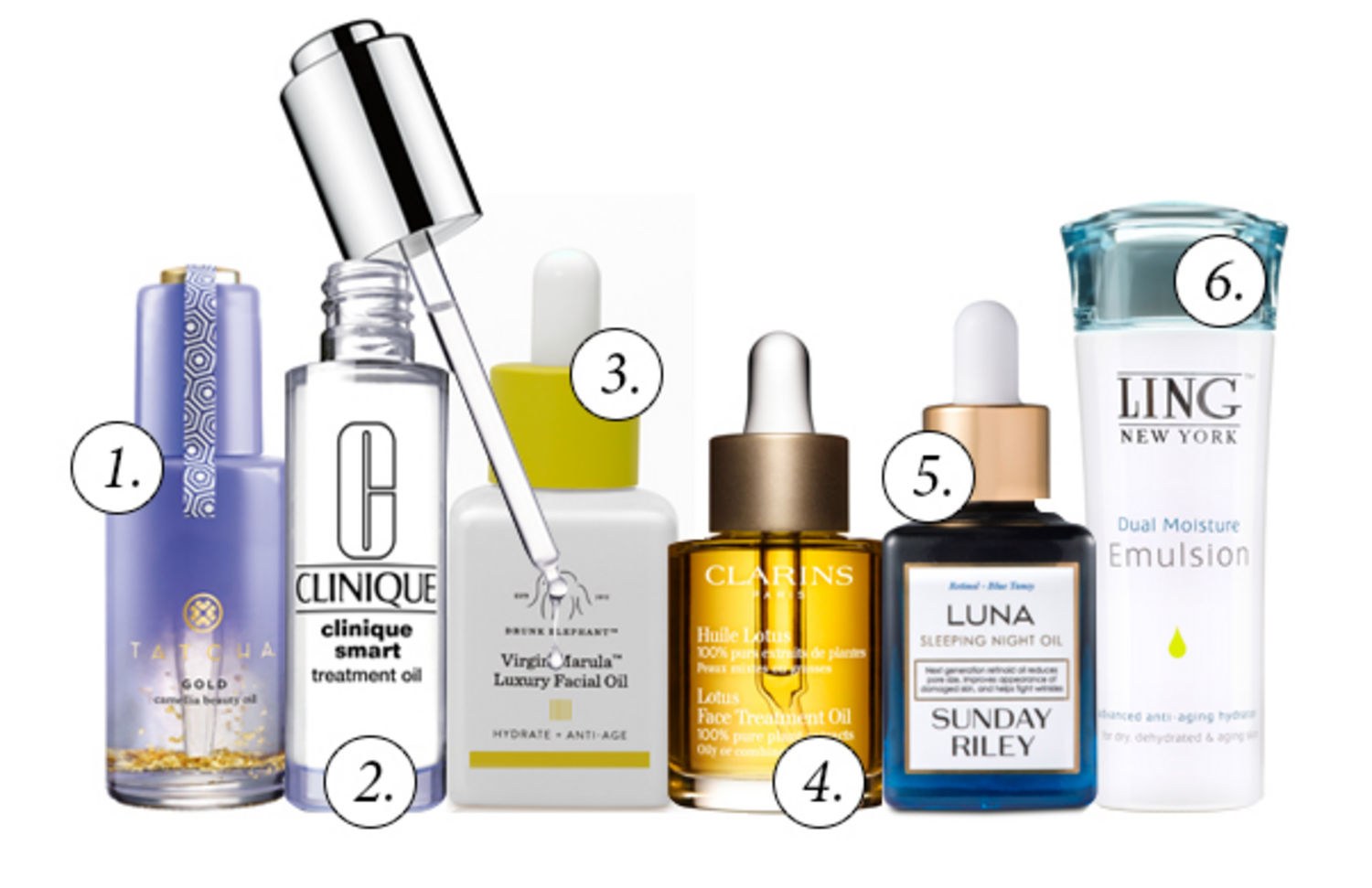Best Face Oil for Every Skin Type and How to Use Them

For most of us, using face oils should be pretty straightforward: Step one, smear on face. Step two, carry on with your day. But the reality isn’t quite so simple. Ask a handful of people what face oils actually do, and you’re likely to get a range of claims—they hydrate, they don’t hydrate, they clog your pores, they help with breakouts, they work miracles, so on and so forth. Confused? We’re here to help you find the best face oil for your skin concerns and how to use it.
What are face oils?
Oils are oils. This seems like it should be a no-brainer. But oils are also emollients, which means that unlike creams or ointments, which sink deep into skin for intensive, long-lasting hydration, oils tend to hang out near the surface. Essentially, their moisturizing power just isn’t up to snuff. But while you don’t get quite as much moisture, it’s not like they’re not doing anything useful. “Oils do add barrier protection, silkiness, and superficial hydration,” says cosmetic dermatologist Paul Jarrod Frank, M.D. They may sink into your skin just enough to nourish the topmost layer—but that’s still not a whole lot compared with true hydrating heavyweights like hyaluronic acid, which literally binds water to skin cells.
A good way to think of it is that oils alone are not moisturizers (and you shouldn’t use them as such). Instead, they should accompany traditionally moisturizing ingredients like hyaluronic acid and glycerin. “A good moisturizer has to deliver both water and oil,” says aesthetician Ling Chan. “Your cells drink the water while oils stay on the outside of the cell for protection and lubrication.” An oil is actually integral to healthy skin, since it acts as the sealant that keeps moisture in. Without it, moisture just leeches out until the next time you apply cream. While this isn’t necessarily going to wreck your skin, it’s definitely not ideal—and it becomes a bigger problem in dry winter weather.
What do face oils do?
Oils give skin an instant softness and smoothness that can be kind of addictive (seriously, try slathering one on and see if you can stop petting your face). But more than that, they’re often packed with essential nutrients, fatty acids, and antioxidants. Plus, adds Chan, they form a protective layer for your skin cells. While they’re not the end-all-be-all solution to skin issues, they do their fair share by repairing and protecting your skin barrier, which helps your skin absorb other skin care products. If you’re not seeing the dreamy skin you imagined you would from serums and moisturizers alone, an oil might be able to make that happen.
How do you use face oils?
You can always mix oils in with your moisturizer, but if you’re going to give them their own spot of honor in your skin care routine, do it before you moisturize but after—or even instead of—your serum. Now, for some bad news: Certain types can clog your pores if you’re prone to breakouts. One of the biggest offenders? Beloved coconut oil. “Coconut oil will stay on the top of your skin for hours,” says Chan. “When oils are too heavy, they don’t allow your skin to breathe.” Your best bets are oils with a smaller molecular size, like argan oil, squalane oil, and jojoba oil. They sink into skin quicker and never get the chance to clog pores.
The best face oils for every skin type
1. Best Face Oil for All Skin Types
Tatcha Gold Camellia Beauty Oil, $95, sephora.com
Buy it for the cool gold flakes floating around in the bottle, but use it for the camellia oil, which packs more antioxidants than any other oil out there.





